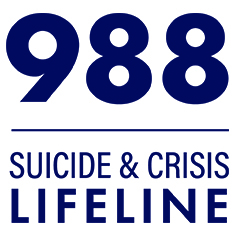Suicide Prevention Education for Emergency Department Staff
April 06, 2012
Staff in emergency departments (EDs) who recalled seeing a poster or receiving a clinical guide on recognizing and managing suicidal patients reported an increase in awareness, knowledge, and skills in identifying and responding to suicidality among ED patients, according to a recent study by a research team that included SPRC’s Director of Science and Policy, David Litts.
Four emergency departments were provided with a brightly colored “Is Your Patient Suicidal?” poster as well as copies of Suicide Risk: A Guide for ED Evaluation and Triage, a brief resource about recognizing and responding to acute suicide risk, evaluating and intervening with patients who exhibit high, moderate, and low risks of suicidality, taking measures to preserve patient safety at discharge, and documenting the process. A fifth ED was used as a comparison site.
Prior to receiving these materials, 36 percent of ED health care providers participating in the study reported that they had been sufficiently trained to assess suicide risk. More than half of the providers in the intervention sites who recalled seeing the poster or receiving the clinical guide reported increased knowledge of suicide risk. Forty-six percent reported the materials increased their skills at asking about suicidal ideation, and 41 percent claimed that the materials improved their skills in managing suicidal patients.
Of the staff who recalled seeing the poster or receiving the guide, 58 percent reported that they always ask patients about risk factors for suicide if they suspect emotional distress (compared to 41 percent of the providers who did not recall seeing or did not receive the educational materials). Nearly three-quarters (73 percent) of the providers who recalled the materials reported always asking emotionally distressed patients if they are having suicidal thoughts (compared to 59 percent of the group who did not recall or receive the materials). More than a quarter (27 percent) of the providers who recalled the materials reported using an assessment guide to help determine level of suicide risk. Twenty-eight percent reported using a clinical guide to help manage suicidal patients. In comparison, 9 percent of the group who did not recall or did not receive the materials reported using an assessment guide to assess level of suicide risk, and 14 percent reported using a clinical guide to help manage suicidal patients.
The authors also pointed out that “clinicians at intervention sites were more likely to report that their ED had good protocols in place for managing suicidal patients” than were clinicians at the comparison site.
Copies of the educational materials described in this Research Summary can be downloaded from the SPRC website. To request a hard copy packet of the materials complete the online request form.
Currier, G., Litts, D., Walsh, P., Schneider, S., Richardson, T., Grant, W.,…Moscati, R. (2012). Evaluation of an emergency department educational campaign for recognition of suicidal patients. Western Journal of Emergency Medicine, 13(1), 41-50
